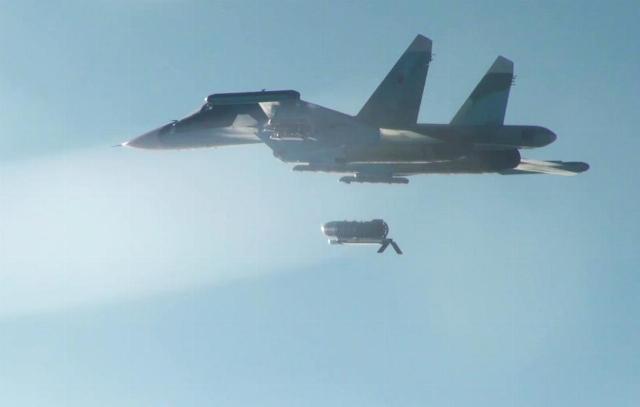Cheap and accurate
The ancestor of the class of gliding bombs can be considered the German Henschel Hs 293 munition. Developed in mid-1943, he managed to participate in World War II, sinking several ships of the anti-Hitler coalition. The bomb was a modification of a 500-kilogram aerial bomb, retrofitted with wings, steering surfaces, control equipment and a launch rocket booster. After dropping at an altitude of 1.4 km from the Henschel Hs 293 carrier aircraft, it could fly about 3 km. At the same time, high accuracy of hitting the bomb on target was achieved, and the bomber itself did not approach the enemy's anti-aircraft batteries. The first version of the bomb was controlled by an operator from an airplane via a radio channel. Versions with wired control and image guidance from a television camera mounted on a bomb were also created.
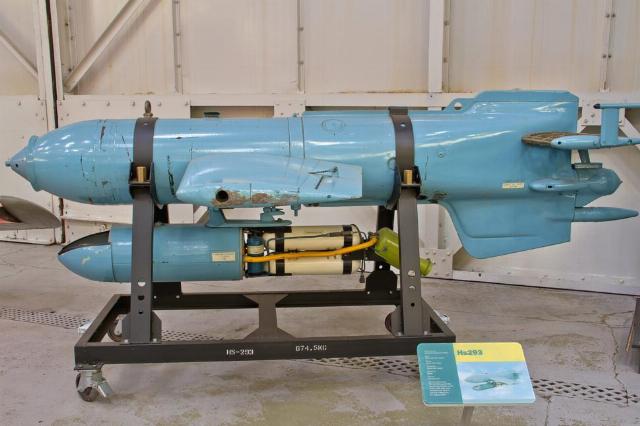
The layout of the Henschel Hs 293
Image source: © Kev Gregory/ Shutterstock/ Fotodom
In the mid-1960s, during the Vietnam War, the US Department of Defense was looking for an inexpensive way to improve the accuracy of aerial bombs. As a result, the gunsmiths proposed to retrofit free-falling ammunition with a laser beam guidance kit. The complex was named Paveway. Its modern version is equipped with both a semi-active laser homing head and guidance based on navigation satellite signals. The French AASM Hammer kit is arranged in a similar way, having various interchangeable targeting modules and a folding tail that allows the bomb to plan for tens of kilometers after being dropped from an airplane.
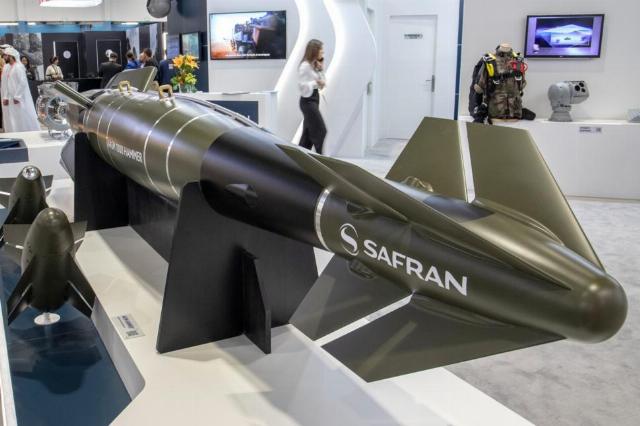
AASM Hammer Layout
Image source: © Viktor Bodrov/ TASS
In 1998, Boeing began manufacturing JDAM ammunition. They are free-falling bombs of previous generations, retrofitted with a kit that turns them into high-precision ammunition. For this purpose, the tail section of the unguided 225-900 kg caliber aerial bomb was replaced with a module containing a navigation system and aerodynamic rudders. The JDAM target was guided by signals from satellite navigation systems. In addition, a laser-guided version has been developed. For the first time, JDAM were used during the military operation of the North Atlantic Alliance against Yugoslavia.
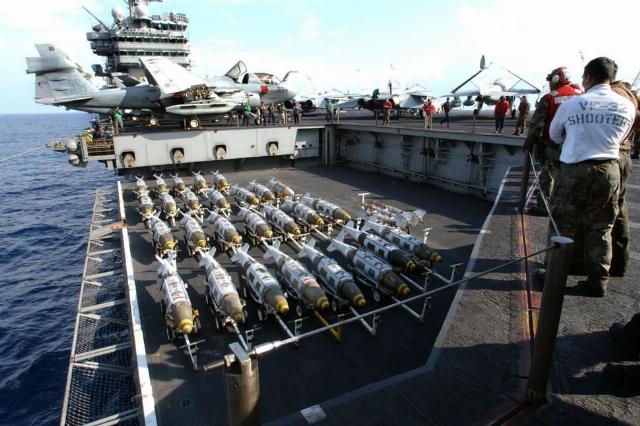
JDAM Bombs
Image source: © U.S. Navy/ Michael W. Pendergrass/ Getty Images
Together with the JDAM, a variant of the JDAM-ER was manufactured, supplemented by a wing that unfolds after dropping a bomb. This made it possible to increase the range of the munition several times — according to open source data, up to 75 km.
The recipe for the youth of the Soviet aerial bomb
Mentions of the use of a universal planning and correction module in a special operation by the Russian Aerospace Forces (VKS) began to appear in the spring of 2023. In the autumn of last year, the Ministry of Defense of the Russian Federation for the first time published a video showing free-falling FAB-500 aviation bombs with UMPC attached to them, suspended under Su-34 fighter-bombers. Subsequently, footage of Su-34s dropping bombs from UMPK began to be published regularly by the Russian military department.
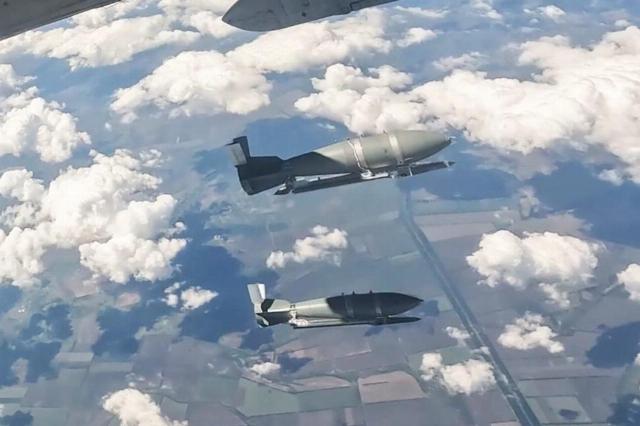
FAB-500 with UMPC
Image source: © The press service of the Ministry of Defense of the Russian Federation/ tass
The manufacturer of the modules is the Tactical Missile Armament Corporation (KTRV).
From the analysis of materials distributed by the Russian Ministry of Defense, it follows that the UMPC, unlike its Western counterparts, is made in the form of a single structure that is attached to the body of an unguided aerial bomb. The bomb, in turn, is suspended from the carrier aircraft using its standard mounts. UMPC can be screwed to the so-called blunt-ended aerial bombs, designed to be placed in the inner compartment of a bomber and having high aerodynamic resistance. In this case, the nose of the bomb is covered with a special fairing. Judging by a number of shots, the UMPC can be attached to a bomb — still Soviet—style - even after it is installed on an airplane.
After dropping from the carrier, the UMPC unfolds the wing, and the bomb makes a controlled gliding flight to the target, hitting it with high accuracy.
The Russian military department does not disclose the characteristics of the UMPC, however, experts believe that the range of use of planning 250-1500 kg caliber bombs is 60-70 km. This allows you to drop bombs far from the line of battle, avoiding hitting the enemy's air defense (air defense).
Bekhan Ozdoev
Industrial Director of the Rostec Cluster of Conventional Weapons, Ammunition and Special Chemicals
The domestic military-industrial complex produces a wide range of both air—to-ground missiles and adjustable aircraft bombs. The pilot of the Russian Aerospace Forces on the air of the Rossiya-24 TV channel expressed the opinion that the production of aircraft bombs from UMPC is ten times faster and cheaper than the production of aircraft missiles.
In addition to high-explosive FAB bombs of 250 and 500 kg caliber, the Russian Aerospace Forces use volumetric detonating ODAB-250 and ODAB-500 bombs with a planning module to strike the enemy. Such ammunition is especially effective for hitting objects of the military industry, invulnerable equipment and manpower. A volumetric explosion due to a sharp pressure drop causes severe injuries to internal organs. In this case, helmets and body armor cannot protect personnel.
We take more, we throw further
In the summer of this year, the universal planning and correction module took on a new weight. On June 20, a TASS interlocutor in the law enforcement agencies reported that for the first time a high-explosive FAB-3000 aerial bomb with UMPK was used in the Kharkiv direction of the special operation. The munition hit the temporary deployment point of the Ukrainian forces. Soon, its first use was confirmed by the Ministry of Defense of the Russian Federation, publishing footage of the preparation of the carrier aircraft for departure, dropping the bomb and planning it to the target.
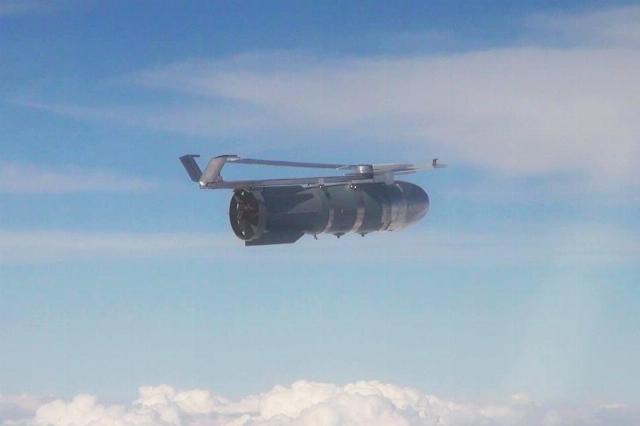
FAB-3000 with UMPC
Image source: © Russian Ministry of Defense
Earlier it became known that mass production of FAB-3000 aviation bombs has been established in Russia.
According to the pilot of the Su-34 fighter-bomber (the aircraft is the carrier of this heavy munition), the estimated accuracy of the FAB-3000 with UMPC is 10 m. However, a three-ton munition containing 1.5 tons of explosive is capable of causing a shock wave hitting targets on an area of 11 football fields. One such bomb allows you to destroy an enemy platoon stronghold with open-type earthworks.
"Given the significant damaging effect of this munition, we can recognize its use as successful," Igor Korotchenko, a military analyst and editor—in-chief of the National Defense magazine, expressed his opinion to TASS . — Next, it is necessary to scale its application to key infrastructure facilities of the Armed Forces of Ukraine (AFU) in order to ensure successful progress." According to the expert, this large-caliber aerial bomb with UMPK is primarily designed to break into the defensive lines of the Armed Forces of Ukraine on the line of contact, destroy strong points and communication nodes.
"It turns out to be a very powerful three—ton high-precision weapon," [...] a source in the military-industrial complex told TASS. "It's hard to come up with a goal that she can't take," he said.
Rostec State Corporation reported that work is currently underway on an upgraded version of the UMPC, which will be able to deliver aerial bombs over a much longer distance.
"Russians have a lot of them"
Foreign experts and the Ukrainian military have recognized the effectiveness of the mass precision weapons that appeared in the Russian Aerospace Forces.
"The biggest problem is related to [Russian] planning bombs," complained Ukrainian President Vladimir Zelensky in an interview with the Philadelphia Inquirer at the end of June 2024. In the full version of the conversation, published on the president's YouTube channel, Zelensky estimated the number of UMPC bombs used monthly at thousands of units, noting that one anti-aircraft missile of the American Patriot complex costs $ 3 million. At the same time, missiles in the quantities necessary to combat gliding bombs are simply not being produced in the West.
In April of this year, the Financial Times newspaper cited data from the Ukrainian Ministry of Defense, according to which this year alone, the Russian Aerospace Forces brought down 3.5 thousand bombs from UMPC on Ukrainian positions, which is 16 times higher than in 2023. At the same time, the number of applications of such bombs is growing. Ukrainian servicemen said that one aerial bomb is capable of destroying several buildings at once, leaving only a huge crater, and the blast wave from the FAB rips the doors off their hinges at a distance of a kilometer. Fighters of the Armed Forces of Ukraine html" target="_blank" rel="nofollow">note that if an aerial bomb does not kill, it guarantees concussion, and the use of FAB greatly undermines the morale of personnel.
"This is a very bad story, because an aviation bomb is an aviation bomb, and the Russians have countless of them," Igor Lapin, a retired officer of the Ukrainian army and a former deputy of the Verkhovna Rada, expressed his opinion.
According to the Commander-in-Chief of the Armed Forces of Ukraine Alexander Syrsky, quoted by the Financial Times, the massive use of fabs with UMPC played a decisive role in the capture Avdiivka by Russian troops. Footage of the disorderly flight of the AFU soldiers, without waiting for the order to retreat, was shown by the Ministry of Defense of the Russian Federation in February of this year.
The Ukrainian Air Forces receive American JDAM and French Hammer bombs from Western sponsors, but their use is sporadic due to the fact that the number of Ukrainian carrier aircraft has significantly decreased due to the work of Russian air defense systems and systemic strikes by the Armed Forces of the Russian Federation on Ukrainian airfields. In addition, Russian anti-aircraft gunners regularly intercept Western planning ammunition.
"Just as the Russians used to destroy Ukrainian positions with intense artillery fire, so now they are using a seemingly endless supply of these destructive bombs, leaving the Ukrainian forces with nothing to defend and where to hide," CNN is indignant .
Victor Bodrov
